

The literature tends to avoid the issue as to whether the narrowing at the leaf base constitutes a (winged) petiole, refering to it as a "petiolar region" (Nesom 1995), "subpetiolar base" (Correll & Johnston 1970), or simply "tapering at the base" (Simpson 1978); but in the recent Flora of N. America, Vol 19, Nesom (2006) employs "Leaves petiolate" vs. "Leaves sessile" in his key to distinguish C. texana (petiolate) from C. tomentosa. When I attempted to apply this criterion to my C. carduacea population, assuming at the time it was C. texana, I found that it just didn't work. I constructed a gallery of my own images together with online herbarium images and defied colleagues to distinguish the two species (i.e., tomentosa & texana) on this basis. Once I separated C. carduacea from C. texana the task became less challenging, but even then I found that additional clarification was necessary in applying the distinction to C. carduacea (typically sessile) & C. texana (typically petiolate).
Petiole needed to be defined more clearly with respect to Chaptalia, thus:
Following this definition, the following petiole lengths were obtained from the longest leafs of selected plants:
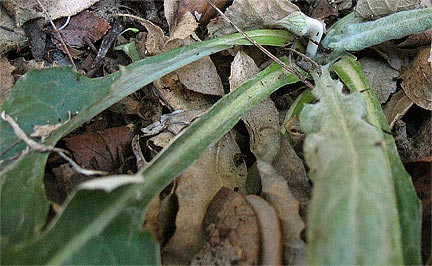
|
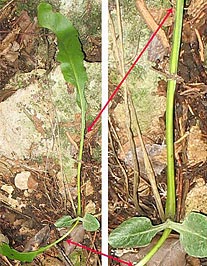
|
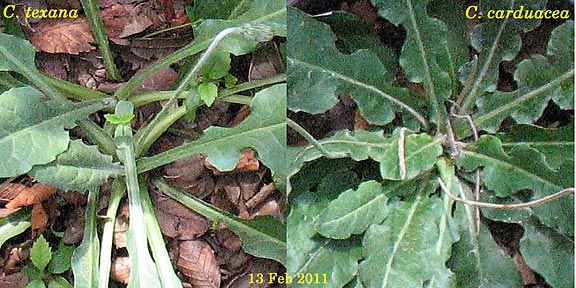
Characterizing C. texana as 'typically petiolate' and C. carduacea as 'typically sessile' is potentially misleading. First, the distinction is valid only over a population of plants, and not necessarily for all individuals, especially not young plants. For example, a photo showing a group of plants with long petioles (Travis Co.) posted at the Lady Bird Johnson Wildflower Center can only represent C. texana. Second, not all leaves (of C. texana) will exhibit a clear petiole, again not with younger leaves. With C. carduacea longer petioles were found only with plants in deep shade and more abundant moisture — shade does seem to be a factor leading to increased growth of the leaf base in C. carduacea. (Leaf details of one C. carduacea atypical plant.)
Note the variation in the leaf bases with C. texana seedlings the same age in the photos below. The plant on the left has developed strong petioles (and could only be C. texana), but the plant on the right has not (and could easily be mistaken for C. carduacea).
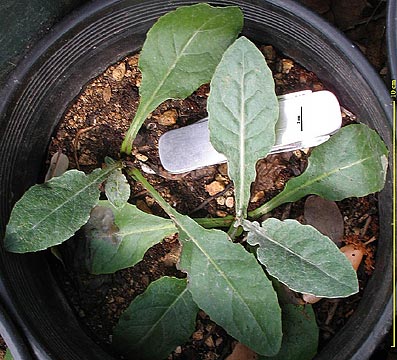
|
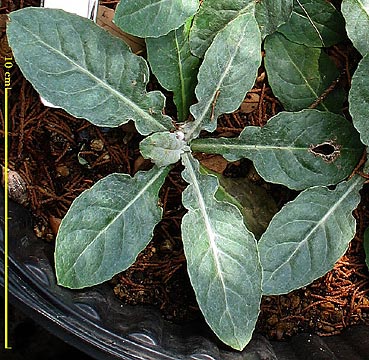
|
In the C. carduacea images below note that the lamina/midrib contrast is more apparent when viewed from the abaxial surface, with its prominent raised midrib and flat lamina with a well-defined marginal rib.
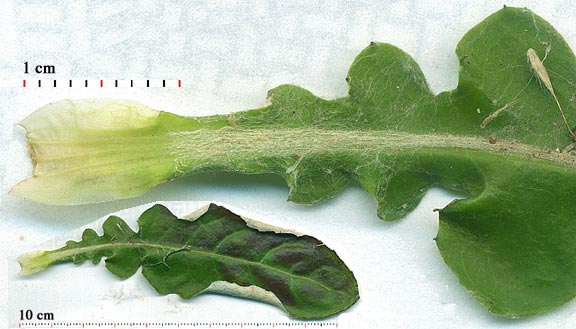
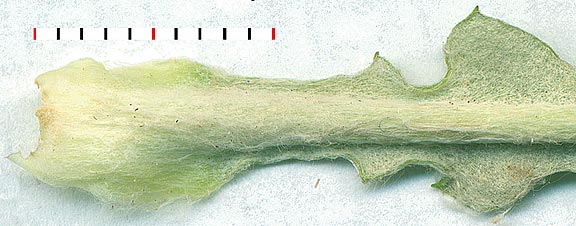
Seedlings at 30 days (germinated at the same time) also show difference in leaf base. Cotyledons of C. texana developed elongated petioles. Similarly the early leaves of C. texana show a more well-defined base of the blade proper in contrast with C. carduacea, which is more tapered. (Note that in the details below C. texana is c. 1.5 × enlarged in comparison with that of C. carduacea, which had developed larger leaves.)
| C. texana | C. carduacea |
|---|---|
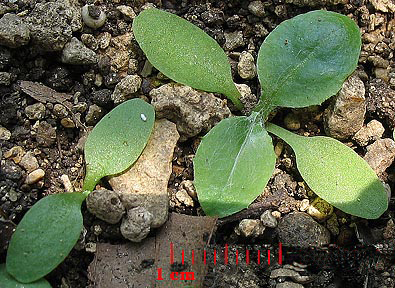
|
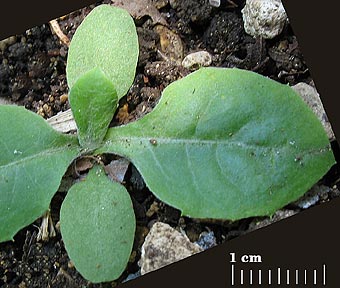
|
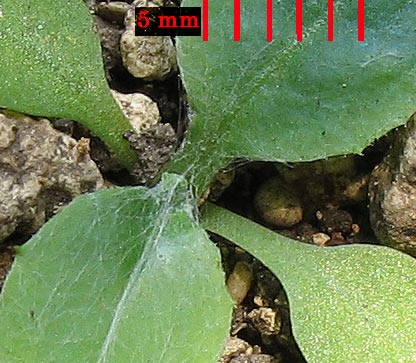
|
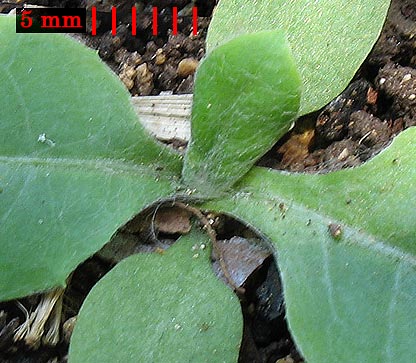
|